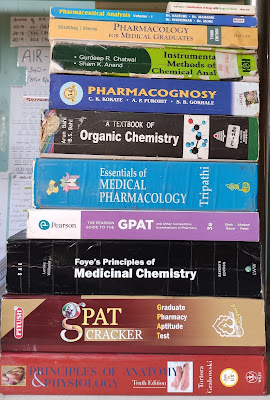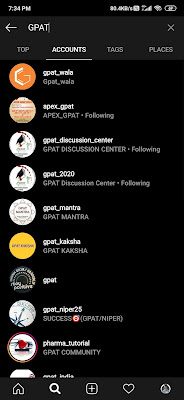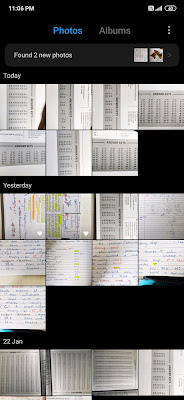4. Reference books – the crux
Reference books – the big, fat books that have been written in
the most complicated words and have more pages than you have ever seen in your life? That isn’t the whole story and I’ll clarify a few things
I didn’t know what reference books are and didn’t start
using them until I entered my B. Pharmacy course. Up until then the only thing I
had used were the textbooks prescribed by the SSC/HSC board during my School
and Jr. College.
Some of the facts I have learned over the years:
1. Textbooks vs References
The first thing I’d like to address is that the “textbooks”
that we use like Techmax/TechNeo, Nirali, Career etc. are not the best books to
study from. These books are just a summary of the reference books that have
been cut short and organized as per the syllabus of that specific subject for
that semester. It is a convenient book to have but it doesn’t have much
information and is only useful to pass your semester exams by writing big lengthy answers. When it comes to gaining thorough knowledge and understanding a
particular subject references are the best resource to go to.
2. Why are references the best resource and so big?
References are written by highly qualified teachers and
professionals who are the best at what they do, reviewed and edited by smart
people. You can be assured that whatever you learn from the top, well known
references is correct and genuine information.
The reason why they are big is because they cover a vast
variety of topics and not just the ones that are required by the syllabus. You have
to comb through the book and select the topics you have to study. The topics
explained are big because they use more words to simplify the topics and really
go to the depth of the content. You will have to read more words than you would
in a textbook but you will understand the topics in and out.
References have the best images, charts, diagrams, flowcharts, etc. and they really improve the experience of learning what topic you are dealing with and get involved. Most of the flowcharts and diagrams you will find in references are so easy and great that you will retain that picture in your head and won’t have to remember words.
PS: It’s a personal thing but I always find and prefer the brightest and colorful references!
3. How do I use a reference book?
It took me long to figure this out but I will try my best to
explain to you what I have learned about references.
The first thing you will need is patience because the topics
are explained in depth and you will have to go through a lot of theory. Initially you can read through the whole chapter in one go like you would read a textbook.
Try to make as much sense of what you are reading and understand the topic.
Once you’ve gone through the whole chapter you, now have an overall picture of what you’re dealing with and will be able to make much better sense.
Next you have to go through and read the topic again but this time you need to make sure that you properly understand each and every sentence. If you get stuck on a certain point, then stop there. Don’t go ahead and instead try to make sense of that sentence and the point the author is trying to make. Use other resources, use the internet, ask you friends/teachers but make sure that you understand that point before moving ahead.
Mark the words you feel are
important as and when you read. When you use another resource to clarify a
point then write that too somewhere around that line so that you can go through
your that explanation later on during revision.
Make sure to go through the images, charts, diagrams, etc as and when the author mentions them to get more clarity on that point.
Go over the charts and tables at the end when you are done studying the whole topic. Some of them are more than sufficient to summarize the gist of a topic that they want
to explain.
4. How many references to use?
This is a tricky one because the possibilities are endless.
You can use as many references as you want as long as you can manage them
efficiently. My max would be 6 references, a ppt, a video and a textbook all at
once when I had really gotten into a topic in Biochemistry. (That is an extreme
and you don’t have to go that crazy!)
The best part about references is that you have eBooks now
so you can use as many as you want by keeping them open on multiple tabs and
switching between them in your phone (I used WPS Office app for this). You can use 2 hard copies at one go too if you’re comfortable with that.
The thing about using one reference is that it is never sufficient and would not work out too well. Each of the references have a few good qualities:
- Complicated theory explained in very easy words.
- Lots of facts and information that are important.
- Really good and easily explained diagrams.
- Great charts that really sum up everything in one picture.
- Some are good at summarizing things.
- Some have a lot of information that isn’t important but is so interesting that you get lost while reading it.
The worst part about this is there you will never find one
book that has ALL of these qualities that I’ve mentioned. That is one of the
biggest reason why you will have to use multiple references that has each of
these qualities that make the reference a great resource to use.
5. Should I never use textbooks then?
No. Textbooks are small and easy so it is good to start by
using them first if you’re scared and overwhelmed by references. Textbooks are
great for last moment studying when you want to quickly revise for the semester
end exam and that is how is used to use them too. Through the semester use
references to study your topics though.
The most important thing I will ever tell you and I might
sound like a teacher but you will never gain much from textbooks. References are
a great resource and that should be the #1 resource that you use to gain
knowledge when studying a particular topic.



Comments
Post a Comment